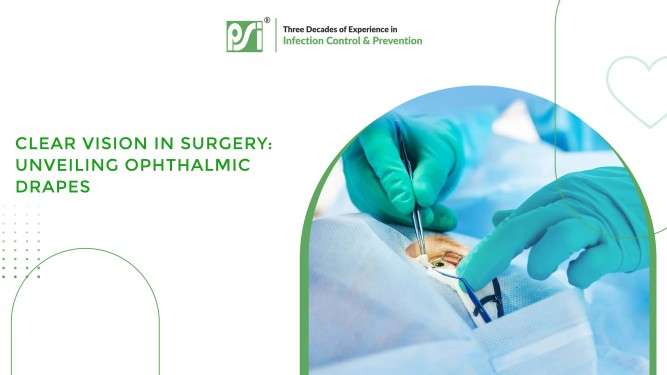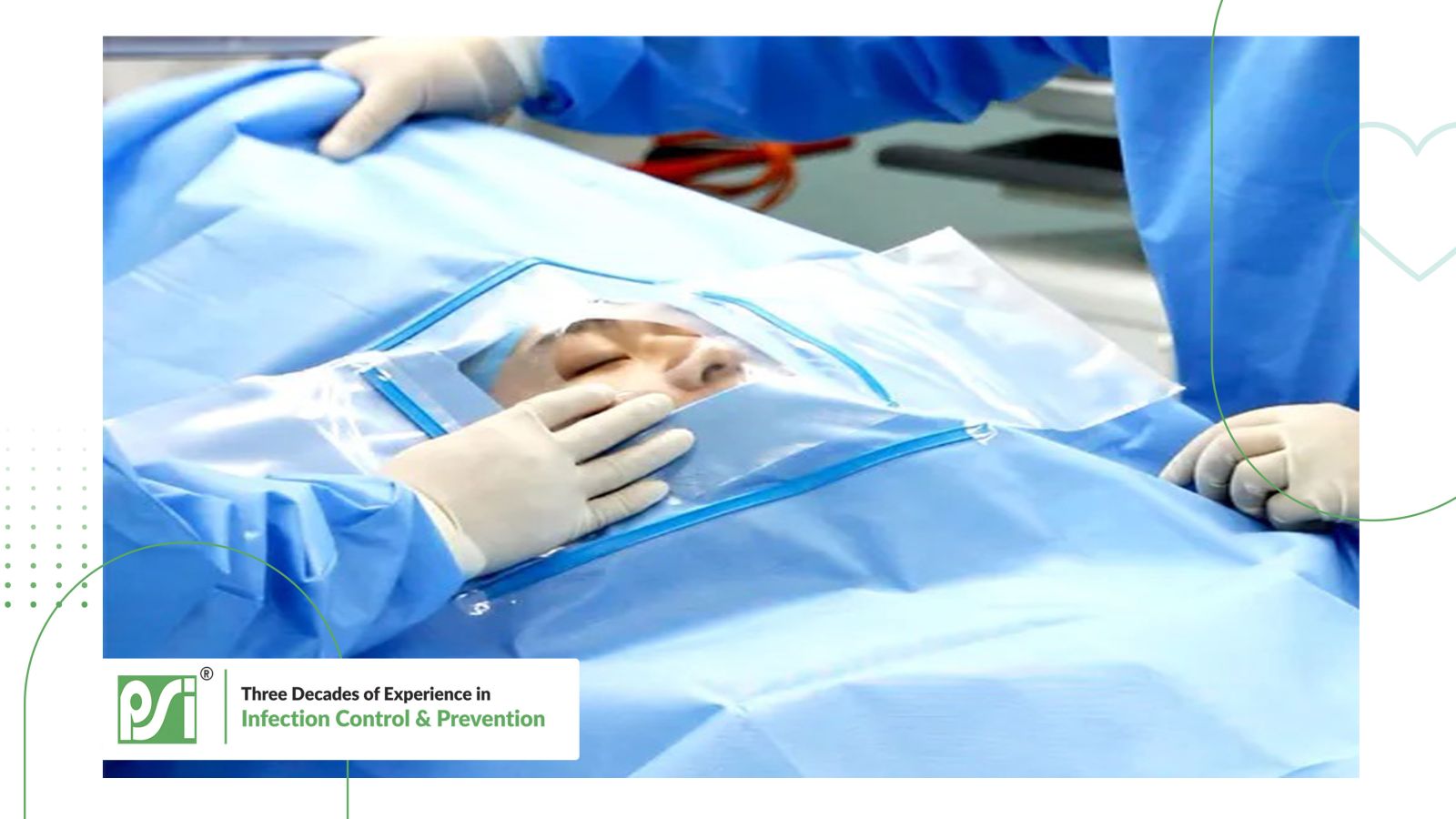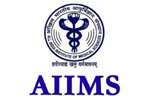One of the best Surgical Disposables company. I am dealing with them for the past 5 years,
their products are world-class. Their approach to trade is professional. All the best wishes to
them.
Clear Vision in Surgery: Unveiling Ophthalmic Drapes
- By: Plasti Surge Industries

Ophthalmic drapes are specialized sterile covers used in eye surgeries to create a clean and controlled environment in the operating room. These drapes are designed with precision to ensure the utmost safety and clarity during procedures involving delicate eye tissues. Their importance cannot be overstated, as they serve as a barrier against contaminants, maintaining the sterility crucial for eye surgeries. Ophthalmic drapes are meticulously crafted to provide optimal visibility of the surgical field, allowing surgeons to perform intricate procedures with clarity and precision. In the world of eye surgery, ophthalmic drapes are indispensable tools that contribute to successful outcomes and patient safety.
Maintaining Sterility: Ophthalmic drapes play a pivotal role in maintaining the sterile integrity of the operating room during eye surgeries. These specialized drapes create a barrier that prevents airborne contaminants and microorganisms from entering the surgical field. By isolating the patient's eye and the surrounding area, ophthalmic drapes significantly reduce the risk of infections and post-operative complications. This meticulous attention to sterility is vital in eye surgeries, where even minor infections can have severe consequences. Ophthalmic drapes act as a protective shield, ensuring a safe and aseptic environment for delicate eye procedures.
Design and Components: Ophthalmic drapes are meticulously designed with specialized features to meet the stringent requirements of eye surgeries. They typically include adhesive areas or strips that secure the drape in place, preventing any accidental slippage during the procedure. Fenestrations are strategically placed openings that expose the patient's eye while maintaining the surrounding area's sterility. These fenestrations come in various shapes and sizes to accommodate different surgical needs. Additionally, some ophthalmic drapes feature fluid collection pouches, which efficiently capture and divert any fluids away from the surgical field, ensuring optimal visibility and precision during the procedure.
Materials and Sterilization
- Ophthalmic drapes are typically made from high-quality, medical-grade materials, such as non-woven fabric or plastic.
- These materials are chosen for their durability, resistance to tearing, and ability to maintain a sterile environment.
- Sterilization processes, such as gamma irradiation or ethylene oxide (EtO) gas, are employed to ensure the drapes are free from harmful microorganisms.
- Sterilization is a critical step in the manufacturing process to guarantee the safety and effectiveness of ophthalmic drapes for surgical use.
- These processes adhere to strict regulatory standards to meet the highest quality and safety requirements.
Customization and Sizing: Ophthalmic drapes are designed with customization in mind, ensuring they can accommodate a variety of surgical requirements and patient sizes. Proper sizing is essential to maintain a sterile field and provide the surgeon with optimal access. Customizable features, such as adhesive areas and fenestrations, allow for precise positioning, ensuring the drape fits the patient's face comfortably while exposing the surgical area. This attention to detail in sizing contributes to the effectiveness of ophthalmic drapes in maintaining a sterile and controlled environment during eye surgeries.
Role in Ophthalmic Surgeries: Ophthalmic drapes play a vital role in a range of eye surgeries, including cataract procedures and retinal surgeries. They create a barrier that shields the patient's face and the surgical area, preventing contamination and maintaining a sterile environment. Whether it's protecting the eyes during cataract surgery or providing a clean field for intricate retinal procedures, these drapes are essential tools that ensure the safety and success of ophthalmic surgeries.
Ensuring Compliance
 In India, the manufacturing and use of surgical drapes, including ophthalmic drapes, are regulated by various authorities and standards to ensure patient safety and the effectiveness of surgical procedures. The Bureau of Indian Standards (BIS) provides guidelines for the production of medical textiles, including drapes, ensuring that they meet quality and safety requirements. Additionally, the Medical Council of India (MCI) and the National Accreditation Board for Hospitals and Healthcare Providers (NABH) enforce standards for healthcare facilities, including the use of sterile drapes during surgeries. Adherence to these regulations is critical in ophthalmology to prevent infections and maintain the integrity of delicate eye surgeries.
In India, the manufacturing and use of surgical drapes, including ophthalmic drapes, are regulated by various authorities and standards to ensure patient safety and the effectiveness of surgical procedures. The Bureau of Indian Standards (BIS) provides guidelines for the production of medical textiles, including drapes, ensuring that they meet quality and safety requirements. Additionally, the Medical Council of India (MCI) and the National Accreditation Board for Hospitals and Healthcare Providers (NABH) enforce standards for healthcare facilities, including the use of sterile drapes during surgeries. Adherence to these regulations is critical in ophthalmology to prevent infections and maintain the integrity of delicate eye surgeries.
Globally, the manufacturing and use of surgical drapes, including ophthalmic drapes, are subject to rigorous standards and regulations to ensure patient safety and the success of surgical procedures. Organizations such as the International Organization for Standardization (ISO) and the U.S. Food and Drug Administration (FDA) have established guidelines for the production and quality control of medical textiles, including drapes. These standards emphasize factors like barrier effectiveness, flammability resistance, and biocompatibility.
In ophthalmology, adhering to these global standards is crucial to maintaining a sterile surgical environment and preventing infections during delicate eye surgeries. Compliance ensures that patients receive the highest level of care while undergoing procedures that can significantly impact their vision and overall eye health.
Choosing the Right Drapes
|
CONSIDERATIONS |
RECOMMENDATIONS |
|
Quality |
Choose drapes with proven effectiveness in maintaining sterility during surgeries. Look for materials that meet relevant industry standards. |
|
Supplier Reliability |
Partner with established and reputable suppliers with a history of delivering quality medical textiles. Ensure they have a reliable supply chain. |
|
Cost-Efficiency |
Balance quality and cost-effectiveness by comparing prices and evaluating long-term benefits, such as reduced infection rates and improved patient outcomes. |
Selecting the right ophthalmic drapes involves a combination of quality assessment, supplier trustworthiness, and cost considerations to ensure optimal outcomes for patients and surgical teams.
Conclusion
In the world of eye surgeries, clarity is paramount, and ophthalmic drapes play a pivotal role in achieving that clarity. These specialized drapes create a sterile environment, safeguarding the delicate eye during intricate procedures, and ultimately ensuring the best possible outcomes for patients. When it comes to surgical supplies, precision and reliability are non-negotiable. Explore a range of high-quality ophthalmic drapes from trusted suppliers to maintain clear vision in the operating room. Visit our website today to discover the tools that contribute to the success of ophthalmic surgeries. Your patients' vision deserves nothing less.
One of the best companies to partner with. Very responsive and best product quality.
Good experience and corporation for many years. Timely services are provided.
We have been associated with PSI since more than 20 years now. They have superior products, prompt service & courteous people. Using PSI’s products in turn makes our customer happy and helps us to do more business. Overall truly delighted with their customer service.














_iCEz.jpeg)
 +91-7798800781
+91-7798800781






